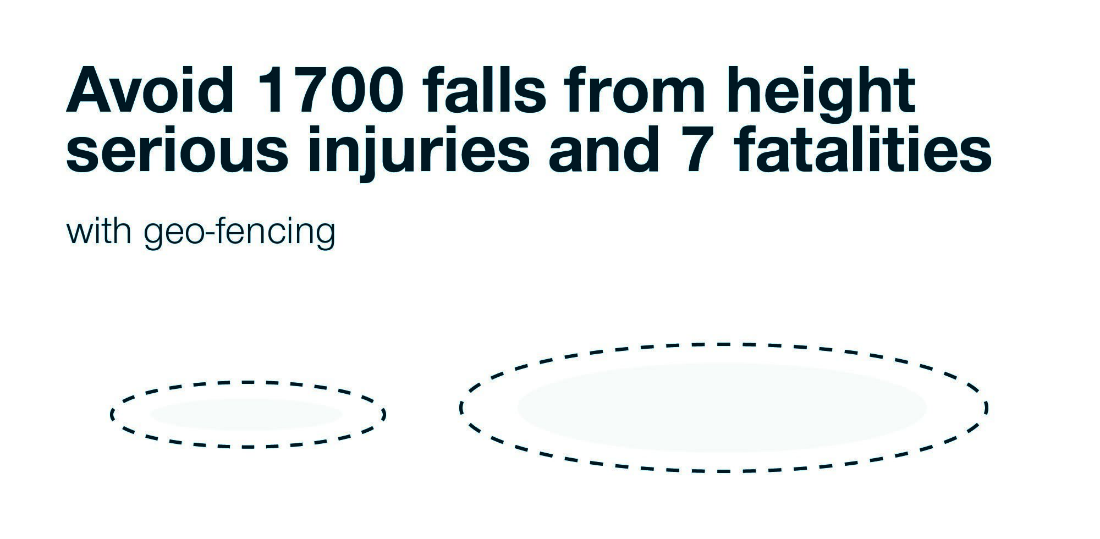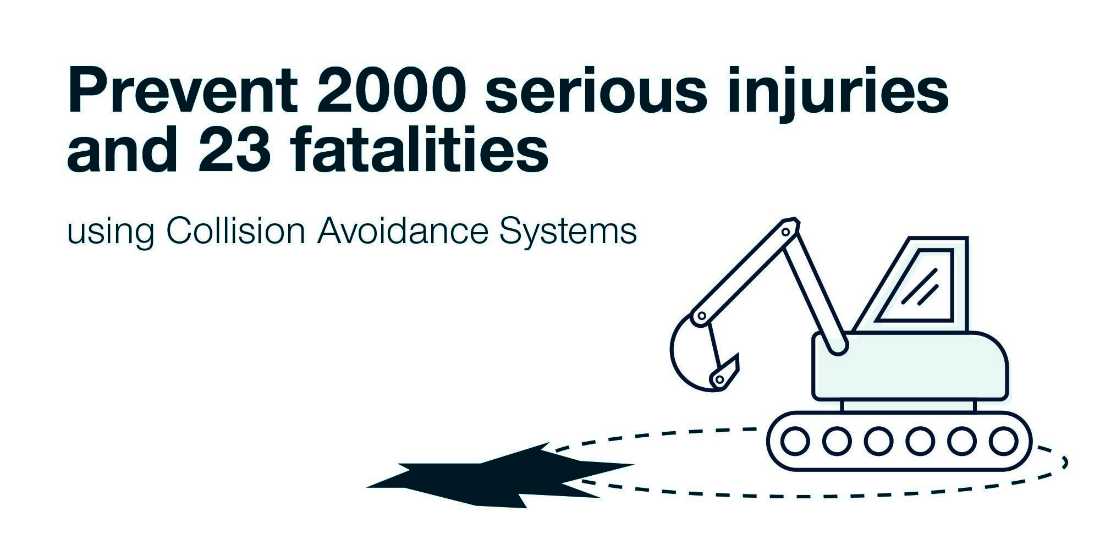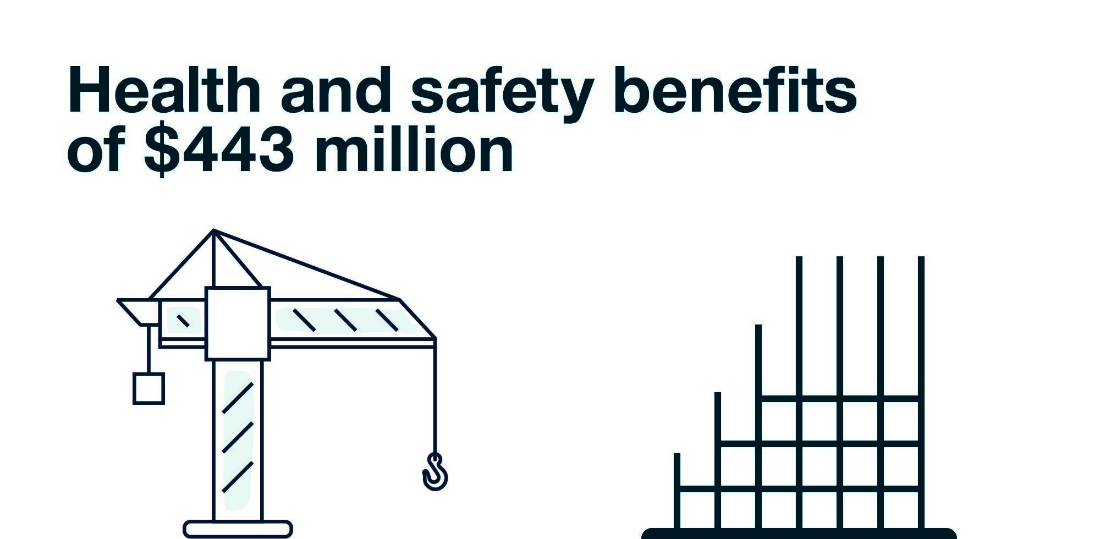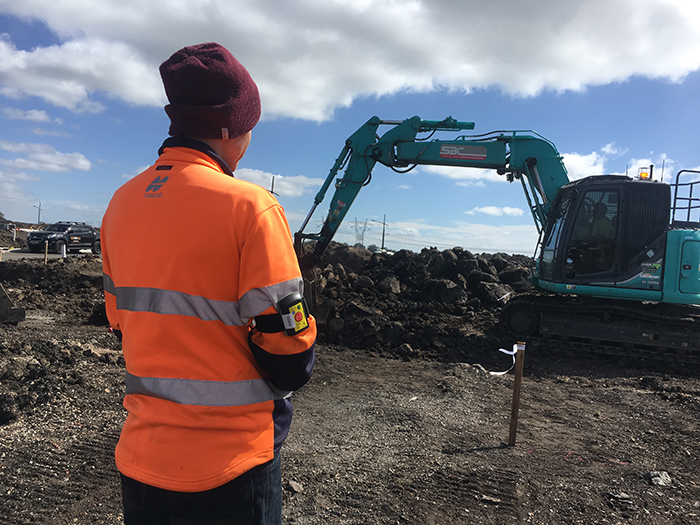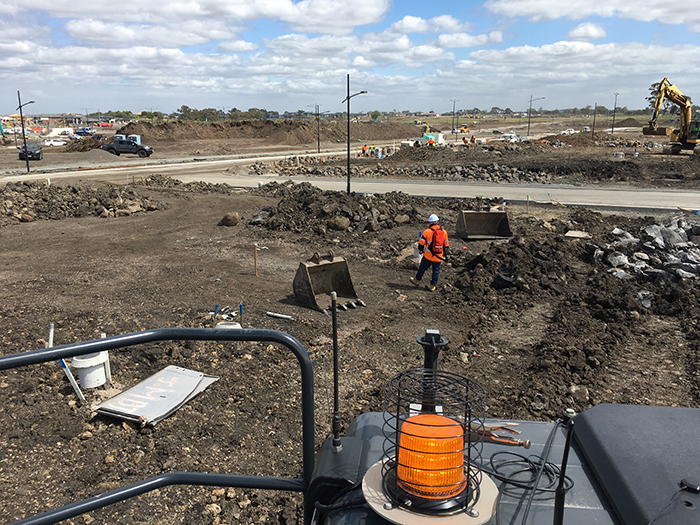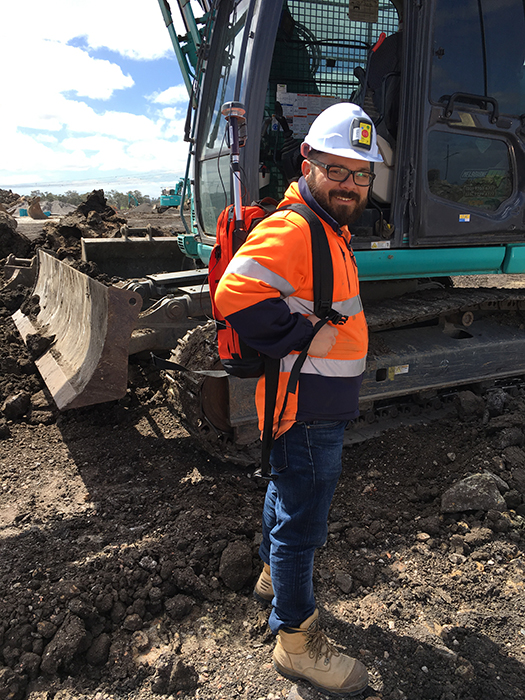Construction
Page last updated:14 March 2025
The construction sector employs over 1.2 million Australians and has been an early adopter of positioning technology to support concept, design and construction of infrastructure projects. Positioning Australia is delivering precise positioning that will improve the safety of workers and equipment.
A trial of SouthPAN’s accurate positioning technology, known as the Satellite-Based Augmentation System (SBAS) test-bed project, ran between 2017 and 2019 to assess the economic, social and environmental benefits of improved positioning technology through a range of industry demonstrator use case projects. These projects tested how SouthPAN could improve existing technologies, or give rise to new innovation, across the economy. SouthPAN’s SBAS test-bed included 27 demonstrator projects across ten industry sectors including agriculture, aviation, construction, consumer, resources, road, rail, maritime, mining and utilities.
This was led by Geoscience Australia in partnership with the New Zealand Government’s Toitū Te Whenua Land Information New Zealand and managed by FrontierSI.
Safer working perimeters
Precise positioning technology will accelerate the adoption of potential geo-fencing applications for demarcation of safe working perimeters around site hazards such as pile holes, trenches or excavation.
Easier vehicle movements
Accurate and reliable positioning information allows vehicle safety systems to be registered with tag-based clothing to detect obstructive objects on site in real-time, alerting workers to potential hazards through an audible alarm.
Benefits to the community
Greater site control has important societal benefits. Construction sites can be made safer through continuous tracking of personnel and equipment. Completing projects on time means less disruption to public access roads and footpaths.
Construction latest industry to trial new global positioning technology
The University of New South Wales and Position Partners took part in SouthPAN’sSBAS test-bed trail on construction sites in New South Wales and Victoria.
The University of New South Wales indicated that they received encouraging feedback from the five companies involved.
"This was the first time the new generation positioning technology has been used in construction and we expect uptake to really take off once the test-phase is complete," Professor Chris Rizos, University of New South Wales said.
"The technology used is a lot like that worn by sports stars on the field - it's worn on workers' hard hats or arm-bands and also put on the machinery.
"This information is then fed to the machine and a control room, where an alarm goes off if machinery like excavators or even people are too close to proximity sensors at geo-fenced exclusion areas - likewise, it can tell you when a person is too close to machinery.
"We trialled this in a busy construction site in Melbourne and found the high accuracy of the information being relayed really helped to improve productivity."
The Personal Proximity Detection System uses SouthPAN technology to send a worker's location to the Collision Avoidance System on an excavator
Position Partners' James Millner said construction is a great industry to test positioning technology, as safety is essential in congested work sites.
"An industry profile compiled by Safe Work Australia in 2015 found that of the most common work-related injuries experienced by workers in the construction industry, 31 per cent were from hitting or being hit by an object," Mr Millner said.
"Many construction contractors work in close proximity to heavy vehicles and other machinery, so knowing where people and machinery are is essential to ensuring the health and safety of workers."
The Collision Avoidance System on an excavator gives real-time warnings when a worker is within 10 metres of the machine
Position Partners Pty Ltd
Project Title
SouthPAN’s SBAS test-bed applied to precision guidance and Remotely Piloted Aircraft System (RPAS) for Australia and New Zealand construction and utilities industries.
Organisations Involved
- Position Partners, Australia and New Zealand
- University of New South Wales (UNSW) Sydney
Project Summary
This project tested, validated and demonstrated the positioning performance of SouthPAN in real-world applications within the construction and utilities industries. It investigated applications for precision guidance, tracking, remotely piloted aircraft and safety systems.
Contact
For further information on this project:
Eldar Rubinov
SBAS Test-bed Technical Manager
FrontierSI (formerly the Australia and New Zealand CRC for Spatial Information)
Door 34, Goods Shed, Village Street, Docklands, VIC, 3008
Tel: +61 406 966 992
Email: erubinov@frontiersi.com.au
www.frontiersi.com.au
For all media enquiries:
Tel: 1800 882 035
Email: media@ga.gov.au
